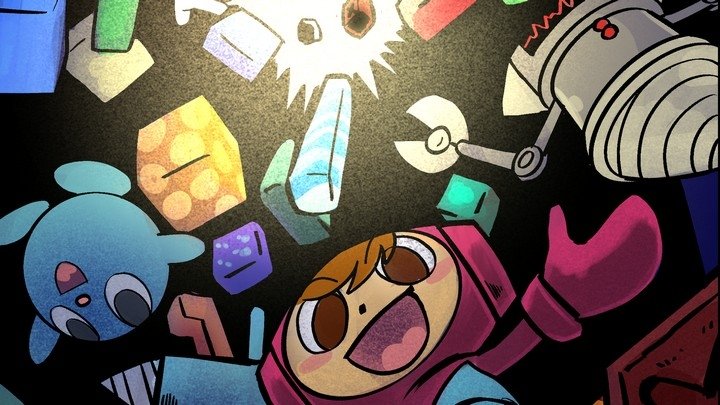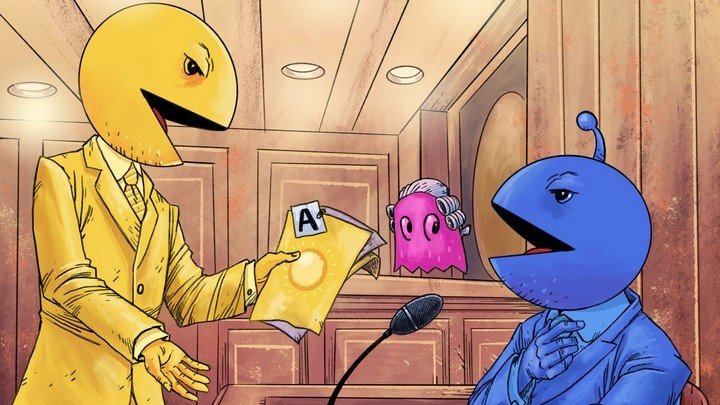Flower at 10 has aged better than its big-budget contemporaries
Turns out the power of a sweet flower did rule the earth
Ten years ago, the delicate indie game Flower was first released on PlayStation 3. Flower broke a lot of molds, turned a lot of heads, and spawned a lot of "is this even a game" soul-searching editorials, but a decade of hindsight shows that it's as much as 2019 game as it was a 2009 game.
The story of Flower must necessarily begin with the story of flOw, the 2006 project created by then-students at USC Jenova Chen and Nick Clark. flOw is, in the crudest sense, a mix of Pac-Man and Snake: players control a tiny organism that swims in 2D and eats other organisms, getting bigger as it feeds and thus is able to eat larger and larger creatures. The catch is that the larger the creature grows, the harder it is to handle as each meal adds components and bulk to its body. Beyond the nuts of bolts of how it played, though, flOw didn't look or feel like any other games out at that time with its microcosmos-in-a-petri-dish aesthetic. The original Flash version was downloaded millions of times, and when a PlayStation 3 version came out in 2007, it was the most downloaded game on the entire PlayStation Network. Granted, PSN was a relatively new market at the time (the PS3 was barely a year old) but that doesn't change the fact that a lot of PlayStation owners spent time with flOw.
Flower would debut on the PlayStation 3 on February 12, 2009, now a product of thatgamecompany founded by Chen, Clark, and producer Kellee Santiago. In a sense, Flower works the same way that flOw does: players move a "creature" through space that gets larger and larger over time. But in Flower, the player doesn't control any recognizable form of life but an ever-growing collection of flower petals carried on the wind. Flower also jumps from 2D to 3D, allowing players to sweep and soar around an assortment of natural environments.
But the biggest change from flOw the Flower was the abandonment of "challenge" as a factor in the game design. As Jenova Chen told Gamasutra, "challenge is the biggest enemy in delivering the experience we wanted for Flower because we wanted the game to feel very relaxed, safe, and friendly." Players in flOw ran a constant risk of being gobbled up by another, larger creature. Flower has no enemies; in most levels, the only obstacle of any kind is the wind that constrains the player's movements and keeps them corralled into certain areas. Chen says that Flower was initially even less restrained, but players became "confused" by the lack of boundaries or goals and sometimes gave up when they felt the game had no point, adding "we actually had to kind of block them before they could move on to the next area."
The unusual controls of Flower merit discussion unto themselves in that they are somehow a product of their time and also exist outside of the box. All the inputs on the controller perform the same function: accelerate. Steering the wind is entirely handled by moving the controller itself; there is no alternate control scheme. Don't forget that the Nintendo Wii in 2007 and 2008 was still outselling its HD competitors by a wide margin, and this initial success sent Sony and Microsoft scrambling for their own motion-based alternatives to video game controls. In Sony's case, this was originally via the SIXAXIS controller which resembled the classic DualShock but lacked any rumble and instead tracked player's movements. SIXAXIS functionality was included in a lot of early PS3 titles, particularly those made by Sony and Sony's partners. Often this was in the form of small gameplay tweaks like shaking a controller for a specific function, but in the case of Flower it was the entire game.
Speaking personally, I found Flower's unique interface to be generally pain-free, but the relaxed atmosphere of the core game created a safety net that makes the whole wobble-thing more palatable. Motion controls are always going to be looser than direct inputs, and I can recall many instances where one slight tilt in the wrong direction forced me to loop around - often multiple times - to get back to the correct path. If Flower was a more traditional game with a timer or a health bar or any kind of fail state, I might not have been so forgiving when the game made me twirl around again and again. Also, unlike Wii Sports, there's nothing intuitive about tilting a plastic grip in two hands to steer flower petals in a gust of wind. I remember asking my wife (a Wii fan but not an avid video game player) if she wanted to try Flower and she didn't know where to begin.
A decade later, Flower feels contemporary because the video game market is now full of games that emphasize emotional experiences over prowess or competition. Indie creators on Steam and Itch.io are exploring all kinds of different narrative and gameplay avenues, and even on consoles there are plenty of challenge-free choices like Gone Home, Tacoma, or What Remains of Edith Finch (to name a few favs). Even Flower itself is available on PS4, as is flOw, and both are free to anyone who previously downloaded them on PS3.
While I lack any desire to replay Flower in 2019, today's anniversary is a pleasant reminder of how far we have come in just ten years. Digital distribution was unproven in 2009, indies were rarely given the spotlight or acclaim that big-budget titles commanded, and most video games were sold on the the prospect of defeating something. Yet today, indies are amongst the top sellers on download rankings, weird games are practically a genre unto themselves, and digital distribution is so accepted that even Nintendo puts every single new game on the Internet day-and-date with physical releases. Flower didn't forge this version of reality we live in, but I can't imagine we'd be here right now if it weren't for its success ten years ago.



